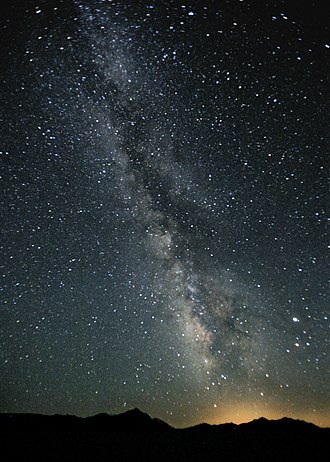Gotta say I like this idea. NewScientist (25 February 2017) reports on the idea of Paula Jofré of the University of Cambridge for tracking the evolution of stars over generations using ideas from biological evolution:
This post is just an excuse to put this gorgeous image on the blog.
Stars move around the galaxy’s spiral arms and disc, making it difficult to figure out where they came from. But if they were born in the same cluster, stars should have similar chemical signatures.
Astronomers use chemical tagging to try to identify stellar siblings even if they have drifted apart. But Jofré and her colleagues thought they could take this a step further by taking a page from evolutionary biology.
“This is an invitation for astronomers to think in a new way about the history of stars and interpret their past,” Jofré says. “A lot more information could be extracted.”
Combining traces of 17 chemical elements as stellar “DNA”, the team categorised 22 stars in our galactic neighbourhood.
Using this approach, the team assembled a tree with three branches associated with stars of different origins. They tentatively argue that the thicker part of the galaxy’s disk forms new stars more rapidly than elsewhere in the Milky Way, which is consistent with other research. They also found that some stars may have even originated from another galaxy that collided with the Milky Way long ago.
Of course, DNA is relatively stable during the lifetime of an organism, while stars actively consume & transform their constituents. However, I see in the academic paper arXiv:1611.02575 this statement:
In astrophysics the chemical pattern obtained from spectral analysis of FGK type stars [stars belonging in the classifications of F, G, or K] can be interpreted as stellar DNA , as it remains intact for the majority of their lives (Freeman & Bland-Hawthorn 2002). The mechanisms for change in chemical abundances can also be identified. There is enrichment of the ISM [interstellar medium], which is relatively well understood due to advances in nucleosynthesis and SNe yield calculations (McWilliam & Rauch 2004 ; Matteucci 2012 ; Kobayashi & Nakasato 2011). Differences in chemical abundances of stars can also be the result of environmental processes bringing gas and stars from extragalactic systems and dynamical processes. Dynamical processes are a result of perturbations from nearby non-axisymmetric features such as the bar, spiral arms, molecular clouds, or merger activity. This can lead to radial migration, which is a change in the angular momentum that conserves the orbit’s eccentricity or heating, which is a change in the eccentricity that conserves the angular momentum (Sellwood & Binney 2002 ; Minchev & Famaey 2010).
So being able to trace where a star was born vs where it’s located now could be quite interesting. Seems academic? Some theories of mass extinction events involve the solar system crossing the plane of our home galaxy, the Milky Way. Paul Gilster discussed it on Centauri Dreams back in 2007:
Muller and Rohde used a huge fossil database of marine organisms developed by the late John Sepkoski Jr. (University of Chicago), one whose data extend back to the time of the ‘Cambrian Explosion,’ the period when so many forms of multicellular life emerged. But while Muller and Rohde pondered alternative explanations for the cycle, two University of Kansas professors have come up with a theory involving the Sun’s position in the Milky Way, one that has gone on to win Muller’s approval.
The Solar System moves up and down as it orbits the galactic core (see image at left). Mikhail Medvedev and Adrian Melott, taking that motion into account, factor in the motion of the Milky Way itself, hypothesizing that its leading, north side generates a shock wave that exposes the Earth to high-energy radiation every 64 million years or so. Here’s Melott on the matter:
“I did notice that not only did these time scales appear to be almost the same, but the drops in biodiversity coincide with the times when the sun is on the north side of the galactic disc. I already knew the north side of the galactic disc was the direction toward which the galaxy is falling.”
Here‘s a 2015 article from The Atlantic on the subject as well. So you can see that what may first appear to be ridiculously useless academic research may actually have useful results. If in a few million years. And maybe sooner.





